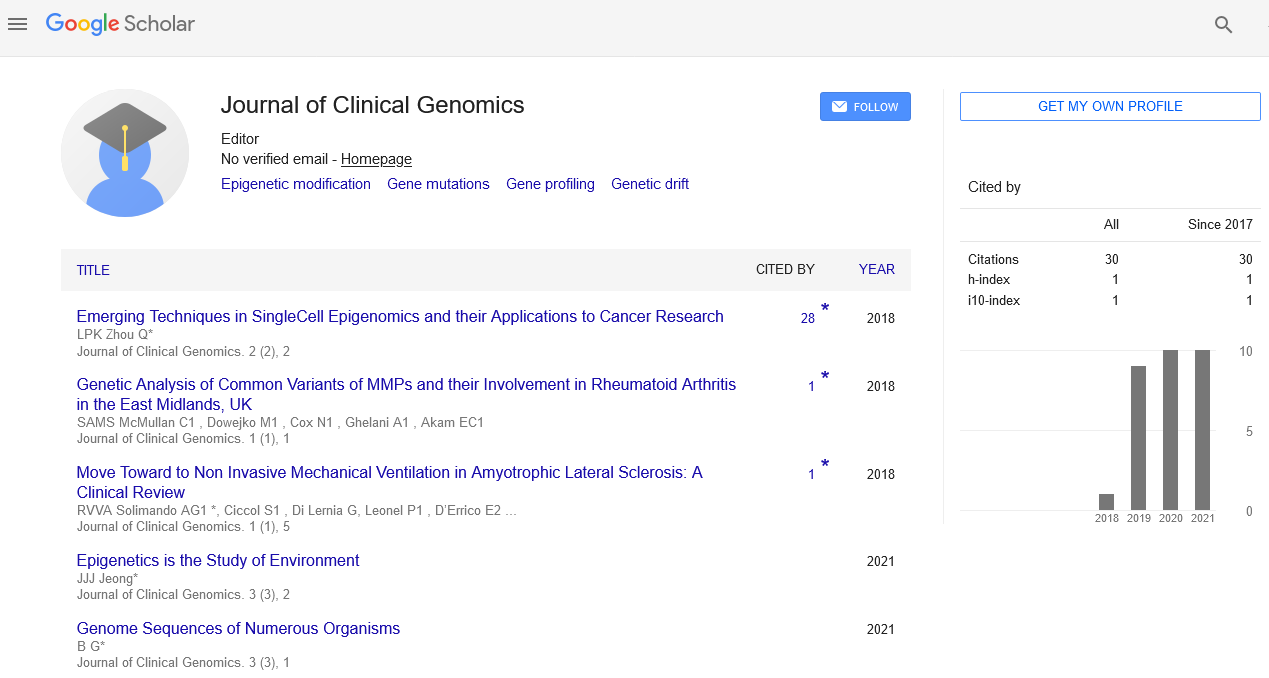Editorial, J Clin Genom Vol: 2 Issue: 1
The Era of Genome Editing
Panagiotis Madesis*
Centre for Research and Technology Hellas/Institute of Applied Biosciences (CERTH/INAB), Greece
*Corresponding Author : Panagiotis Madesis
Institute of Applied Biosciences, Centre for Research and Technology Hellas– Certh, Greece
E-mail: pmadesis@certh.gr
Citation: Madesis P (2020) The Era of Genome Editing. J Clin Genom. 2:1.
Abstract
Gene or genome editing technologies are the hot trend in scientific community. There are several relative technologies which allow scientists not only to change precisely specific DNA sequences but also to change the regulation of gene expression in a well-defined region of the genome and in a specific way at the same time. This approach has thus far allowed the precise modification of genome sequences but it will probably prove to be a new tool for the discovery of novel functions of the genome.
Keywords: Genome editing, CRISPR/Cas nuclease system, Nucleases
Gene or genome editing technologies are the hot trend in scientific community. There are several relative technologies which allow scientists not only to change precisely specific DNA sequences but also to change the regulation of gene expression in a well-defined region of the genome and in a specific way at the same time. This approach has thus far allowed the precise modification of genome sequences but it will probably prove to be a new tool for the discovery of novel functions of the genome. As it happened before, the arrival and the publications from the genome editing technologies raised the expectations that this is going to be the miracle technology which will solve, if not all maybe most of the problems that humanity faces. Especially in the field of medicine where technologies which will correct mutated genes and thus cure diseases is considered as a “holy grail”. At the same time this applies to the agricultural sector where the application of such technologies might come sooner in the market as new products with desired traits are developing and the regulatory agencies might not be so reluctant as in the case of GMOs.
Genome editing is comprised by a wide number of tools having in their core either a site-specific nuclease (SSN) or site-specific recombinase (SSR) system, yet in both systems it is of paramount importance the correct and specific recognition of a precise wellknown sequence. The SSN system creates single or double strand DNA breaks which activate the DNA repair pathway that lead in directed changes in the original DNA sequence. The SSN system includes four main classes’ nucleases which have the capacity to cleave DNA sequences:
1. Transcriptional activator-like effector nucleases (TALENs),
2. Mega-nucleases (homing endonuclease),
3. Zinc finger nucleases (ZFNs) and
4. The CRISPR/Cas nuclease system (clustered regularly interspaced short palindromic repeat/CRISPR-associated protein).
The SSR technology includes systems which are able to cause deletions, insertions, translocations and inversions at high efficiency using a recombination mechanism. This is triggered by specific sites flanking the sequence of interest and depends on the orientation of the specific sites like loxP and FLP.
Genome and gene editing techniques have widened our horizon towards the cure of chronic diseases and for improving crops. Genome editing technologies could allow not only the single base pair substitution but also the deletion or insertion of whole regions in a systems biology approach towards rewriting the genome. The main disadvantage so far is the off target changes that occur and if for plants this might prove to be minor, for human application this is a major concern. Thus the improvement of the system precision will be the ultimate step needed for the extent of these technologies application. Thus far genome editing technologies show increased potential and have raised the expectations. Will genome editing be the best solution? it remains to be proved? Yet, humanity faces an increased number of a efficiency and market value remains to be verified.
 Spanish
Spanish  Chinese
Chinese  Russian
Russian  German
German  French
French  Japanese
Japanese  Portuguese
Portuguese  Hindi
Hindi 